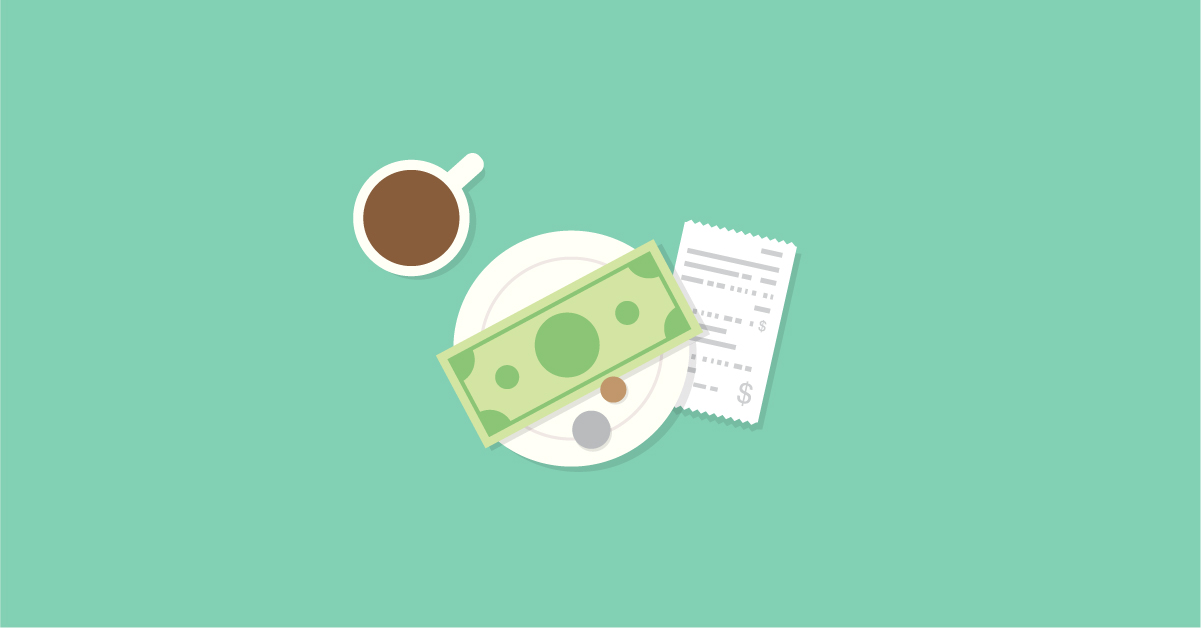
If you’re a restaurant owner or manager, an impromptu health inspection is enough to keep you up at night. Are you prepared?
The goal of a restaurant health inspection is to ensure the health and safety of your guests. To pass one, it’s critical that you store, thaw and cook food in adherence to regulations and that your kitchen, freezers and storage areas are kept clean.
Failure to do so can be extremely costly. Violations found by a health inspector can lead to fines and even being forced to close your doors until conditions and food safety are improved—not to mention customers losing trust in your establishment.
But if you operate your restaurant as though an inspection could happen any day, you’ll always be prepared to ace an impromptu health inspection.
Before we move on to how you can prepare your restaurant for a random health inspection, we suggest consulting your local health department for food code regulations in your state or province. Although all regional codes align with the model that the U.S Food and Drug Administration (FDA) and the Canadian Food Inspection Agency (CFIA), there is no standard code.
- Canadian restaurants: Click here to learn more about your food safety guidelines
- American restaurants: Click here to learn more about your state’s food safety guidelines
What are restaurant health inspections?
A restaurant health inspection is an examination of your restaurant, staff and food products for potentially hazardous or unsafe materials. This can be during storage, production, processing or even packaging.
A health inspector will pay meticulous attention to how you store, thaw and cook food. He or she will also note the cleanliness of your kitchen, storage areas and freezers.
When do restaurant health inspections occur?
Typically they occur, at random, every 6 months, however, a food inspector is also obligated to come visit you if a customer ever complains.
What does a health inspector look for?
Put simply: they want to protect your customers against contamination and food poisoning from your restaurant. During their inspection, a health inspector will be on the lookout for things like:
- Uncovered stored food
- Inappropriate containers
- No labels on your food for “use-by” dates
- No gloves on your employees
- Storing raw ingredients under dripping meat
- Signs of pets
- Storing cleaning products near the pantry
- Lack of temperature control
- No temperature checking log at all
- Hazardous foods out in the open
- Unkept food handlers
- Lack of general cleanliness
They are also going to be looking for knowledge from your managers and staff. Restaurant owners are required to know all of the local health codes. Management is required to have all up-to-date training on food safety and all restaurant employees must demonstrate knowledge of safe food handling and preparation. All of this is this is the knowledge that is tested as part of the Food Handler’s Permit, but the inspector will ask questions to test this knowledge.
To assure that your employees are all aware of and educated on food safety, be sure to include a section that covers the topic in your employee handbook.
What happens if you receive a food safety violation?
In the event that you receive a violation, the important thing is not to panic. Your immediate priority should be to find and implement a solution, fast.
For minor violations
If it’s a minor violation, such as improper labeling, unkempt furniture, you will likely get the chance to address the issue within a prescribed timeframe. You may not even be financially penalized depending on the gravity of the violation, but it will be recorded and you will face a follow-up inspection.
During this time be sure to brief your staff, emphasize the importance of food safety and test your employee’s knowledge.
For major violations
If the violation is more serious, such as improper cooking or cross-contamination, you may face a fine and be required to close the business until you fix the issue.
If you don’t comply with food safety guidelines, your restaurant can end up permanently closed. And remember: violations are always posted publicly on your health department’s website.
Examples of major food safety violations include, but are not limited to:
- Unsafe food sources
- Improper food storage (hot or cold)
- Cross-contamination
- Sick restaurant staff
- Improperly cooked food (especially undercooked)
How to stay up to date with food safety guidelines
Keeping up with food safety guidelines as they change can be a challenge for restaurant owners, especially as they expand and open more locations in other provinces, states and cities.
Janilyn Hutchings, Food Scientist at StateFoodSafety and certified professional in food safety, recommends directly contacting your local health department to stay on top of food safety guidelines.
“Food safety guidelines vary depending on the city, state or province where a restaurant is located. In general, it’s a good idea to periodically call the health department(s) you report to—say, once a year—to make sure you’re staying on top of those guidelines as they change.”
7 tips for acing a restaurant inspection
The proper strategy to be ready for your health inspection is to act like every day is a health inspection day.
Here are some tips to keep in mind:
1. Ensure every employee has their Food Handler’s Permit
A Food Handler’s Permit (often referred to as an Employee Health Permit) is a permit that ensures your staff members individually have completed a food safety certification. This permit ensures your restaurant meets regulations for food sanitation, storage, protection and preparation.
Even if the area where your business operates doesn’t require employees to have food safety training, it’s a good idea to get them trained regardless.
2. Set your priorities
Every restaurant has its own rules. Make sure that your front- and back-of-house employees are on the same page. Lay down the priorities and expectations for how they maintain cleanliness at all stages of food preparation and service. This should include food time and temperatures, cross-contamination and personal hygiene.
3. Set up a daily maintenance schedule
Ensure every staff member knows who is in charge of keeping things clean. This includes refilling hand sanitizer, cleaning the counters, freezers and bathrooms.
4. Stay up to date
Local health codes and laws may change over time. Be sure you and your staff are up to date and hold regular stand-up trainings to remind employees of important principles.
5. Create can’t-miss visual reminders
It may be helpful to hang up food safety posters in the kitchen or break area. Posters serve as permanent reminders of the most important principles (like proper handwashing and safe cooking temperatures).
6. Establish a consistent cleaning schedule
It may seem like a no-brainer, but your restaurant should have a consistent cleaning schedule. After your final service, both your front-of-house and back-of-house staff should have an hour or so dedicated to cleaning their workspaces.
7. Conduct your own inspections
Nothing keeps staff on their toes more than an inspection from their manager!
Instill everyday food preparation, storage, cooking and cleaning habits and routinely make sure that your staff is following them through every day.
Want to run your restaurant at full speed?
Learn more about Lightspeed's complete restaurant management system
Health inspection checklist for restaurants
Food safety codes were created to keep consumers safe. Health codes, when followed, prevent bacteria and other contaminants from coming in contact with the food a restaurant serves.
We spoke with Candess Mendola, Senior Trial Paralegal and Editor for makefoodsafe.com, to curate a checklist of 25 things to keep in mind to assure you’re ready for an impromptu health inspection.
Food storage
A big part of food safety is how food is stored.
1. All food must be stored in the appropriate place and at a safe temperature.
2. Always store food at least six inches off the ground and never store raw meat or any other uncooked food (that has potential to drip) above ready-to-eat ingredients.
3. Food should be wrapped or stored in containers to avoid dripping and contamination.
4. Assure that perishable foods are stored in a fridge or freezer before they reach between 41 and 135 degrees Fahrenheit.
5. Periodically check your refrigerators and assure that their internal temperature is either 40 degrees Fahrenheit or below.
6. For freezers, assure that their internal temperature is 0 degrees Fahrenheit.
Food preparation and cooking
Of course, the way you handle, prepare and cook food is another big part of food safety.
7. Always avoid cross-contamination. This means using separate cutting boards, utensils and other surfaces when preparing raw or allergen-inducing foods like peanuts or shellfish. Always wash food prep tools and surfaces with soapy water after using and before using them for ready-to-eat foods. A HACCP program can help; color coordinate your food prep tools so you never cross-contaminate and sanitize whenever possible.
8. Only remove as much food from the fridge or freezer as you can prepare before food falls outside the safe temperature zone.
9. Whenever you cook raw meats, fish or poultry, ensure that it is heated to the safe minimum internal temperature. This is where a food thermometer comes in handy (but keep in mind that cooking doesn’t kill all bacteria; you still need to handle food the right way before cooking it.)
10. An inspector checks your raw meat and fish with a digital thermometer to assure they’re cooked at the right temperature: 160 degrees Fahrenheit for ground beef, 145 degrees Fahrenheit for fish.
Food service
Whenever serving food, servers need to assure that they’re never coming in contact with the same surface area as guests food (or drinks).
11. Whenever serving food, all utensils, glasses, napkins, plates and other tableware should be clean. Never hold dishes by the top or edge; rather, instruct servers to hold plates from the bottom. Bare hands should never come in contact with the same surface that the food touches.
12. Never re-serve food that was previously served to another customer.
Hygiene
Implement a protocol for your staff’s personal hygiene to prevent them from contaminating food and the workplace.
13. Employees should always wash their hands in the designated hand-washing sink, rather than the same one used for washing dishes.
14. Employees must always wash their hands after using the bathroom.
15. Employees should wash their hands for no less than 20 seconds in hot water.
16. Assure that employees cover any cuts or wounds.
17. Always use a new pair of single-use gloves at the beginning of every food-handling task and replace them immediately if they get damaged.
18. Food handlers should not wear jewelry on their hands except for plain rings.
19. Aprons should always be worn when cooking but removed when leaving the prep area.
20. Label any toxic cleaning products and store them away from any areas that come in contact with food.
Keep pests at bay
It’s very likely that rodents and insects will be attracted to your restaurant. Not only can they eat your supplies, but they also present a number of health concerns.
Here are a few tips to keep pests from getting in your food at any stage.
21. Get rid of any entry points. Assure that all possible entry points are blocked and there are no holes in windows or door sweeps. Your doors should have self-closing hinges and should never be kept open unsupervised. You should check your walls for holes and plug them if you find any. Always be on the lookout for telltale signs of rodents, like droppings and chewed up furniture.
22. Prevent easy access. Keep your floors and food prep surfaces clean. That means no crumbs or spills. Also, store food in air-tight containers and keep them sealed whenever they’re not in use.
23. Take out the trash regularly. Prevent garbage from piling up and attracting not-so-desirable guests.
24. Minimize clutter outside. Use trash cans with sealable lids and make sure dumpsters are not near any entrances to your restaurant. Rodents hate traveling in open areas, so make sure all entrances to your restaurant are clean and have minimal clutter for them to hide in for cover.
25. Use rodent control methods. If rodents or insects become a problem, set up traps in your restaurant. Be careful to not use traps with poison and chemicals. Instead, consider glue traps that don’t use poison.
How to ace a restaurant health inspection
Remember, a health inspector is there to enforce food codes and keep consumers safe. Stay up to date and always be aware of the health codes, food safety practices, and safe handling and preparation. Implement procedures that assure all of your staff prioritize food safety and workplace cleanliness and you’ll ace your next restaurant inspection.
There may not be a prize for passing an inspection, but receiving a high grade will keep guests coming back and encourage new ones to pay you a visit.

News you care about. Tips you can use.
Everything your business needs to grow, delivered straight to your inbox.



